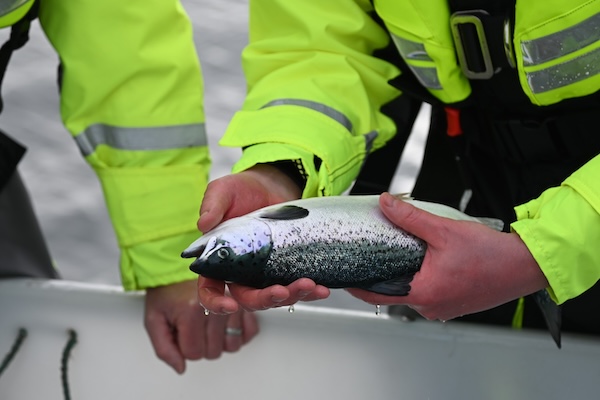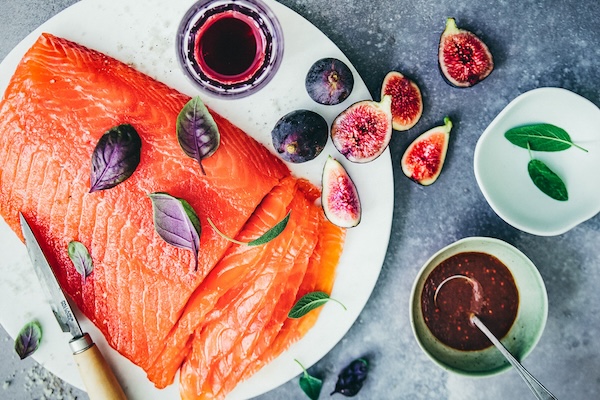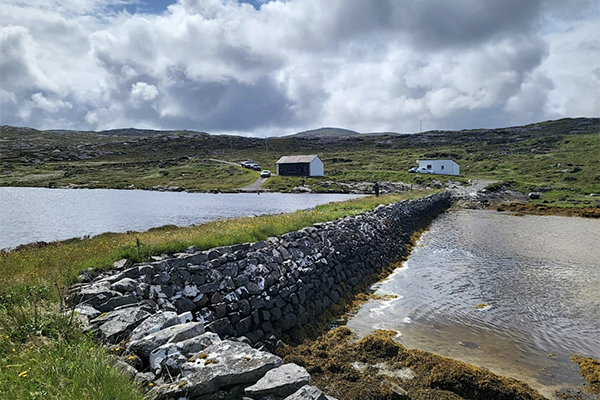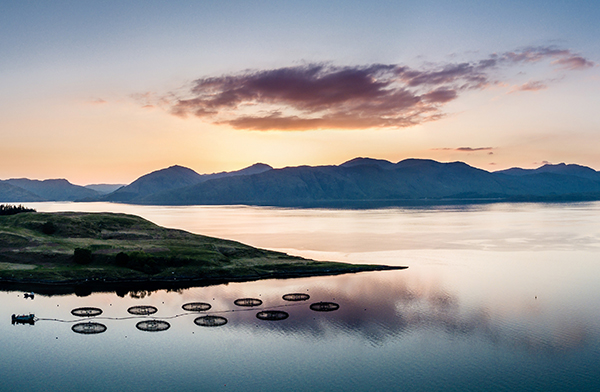Investments of $1.2 billion in fish health and welfare drive record 98 percent survival rate for Scottish salmon

According to new data from Salmon Scotland, £1 billion (U.S. $1.2 billion) investments in fish health and welfare have led to record-high survival rates of 98 percent for Scottish salmon.
New figures revealed a 98.18 percent survival rate on Scottish salmon farms this September – a traditionally tough month for survival due to natural challenges. The percentage of fallen stock dropped by roughly half compared to September last year, when warm autumn sea temperatures sparked micro jellyfish blooms, endangering fish health.
“Scottish salmon farmers provide the highest standards anywhere in the world for the animals in their care and have invested £1 billion in fish health and welfare since 2018,” said Tavish Scott, chief executive of Salmon Scotland. “And while no farmer wants to lose any animal, the care our farmers provide means that survival rates for farm-raised salmon – which spend up to 18 months in the sea – are dramatically higher than their wild cousins.”
Farm-raised salmon, which spend up to 18 months in Scotland’s coastal waters, are the UK’s top food export and are renowned for quality. In comparison, wild salmon face a mere 1 to 2 percent survival rate due to the harsher, uncontrolled conditions of the wild.
Since 2018, the farmed salmon sector has invested £975 million (U.S. $1.2 billion) in efforts to enhance fish welfare, including freshwater treatment vessels, research funding, staff training and high-tech monitoring systems that help manage natural challenges like jellyfish blooms and rising seawater temperatures. Thanks to these measures, survival rates have remained high throughout 2024, peaking at 99.03 percent in June.
The sector, unique in its voluntary monthly survival reports, is now anticipating the Scottish Government’s annual production survey for 2023, set to be published in the next week. Although the report will show a decrease in production volumes due to last year’s environmental hurdles, the industry has already rebounded with a 15 percent rise in production in the first half of 2024 compared to the same period in 2023.
“It is a testament to the dedication of farmers that survival rates on Scottish salmon farms are now at the highest level since 2020,” said Scott.
Now that you've reached the end of the article ...
… please consider supporting GSA’s mission to advance responsible seafood practices through education, advocacy and third-party assurances. The Advocate aims to document the evolution of responsible seafood practices and share the expansive knowledge of our vast network of contributors.
By becoming a Global Seafood Alliance member, you’re ensuring that all of the pre-competitive work we do through member benefits, resources and events can continue. Individual membership costs just $50 a year.
Not a GSA member? Join us.
Author
Tagged With
Related Posts

Intelligence
Scottish salmon exports reach five-year high
Scottish salmon exports have surged to $819 million in the past year, reaching a five-year high as international demand grows.

Responsibility
Salmon Scotland Wild Fisheries Fund boosts wild Atlantic salmon conservation initiatives
The Salmon Scotland Wild Fisheries Fund will invest in supporting the conservation of Scotland’s wild Atlantic salmon.

Intelligence
Scottish salmon farmers to trial simplified licensing and approval process
Can a new consenting process for Scottish salmon farms lead to efficiencies and improved community engagement?

Innovation & Investment
Aquaculture researchers secure funds to enhance fish health and welfare amid climate change
Three new aquaculture projects net $2 million in funding to improve fish health and welfare in response to climate change challenges.



